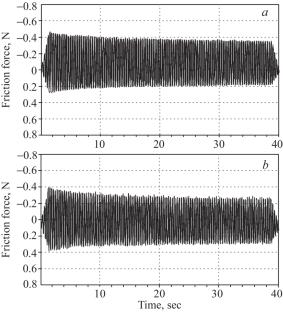Mechanical and Tribological Properties of Cast Monocarbides and Multicomponent High-Entropy Carbides
Abstract
The mechanical and tribological properties of cast monocarbides and multicomponent high-entropy carbides produced by vacuum arc melting using starting monocarbide powders were examined. The cast monocarbides demonstrated a hardness of 20–30 GPa and an elastic modulus of 400–600 GPa. Among the studied monocarbides, ZrC showed the highest hardness (29–32 GPa), while MoC exhibited the lowest hardness (16–18 GPa). The friction coefficient for monocarbides was determined by pin-on-disk testing with diamond in dry friction conditions and in the presence of water. The friction coefficient was found to increase for WC and TiC carbides and decrease for MoC in the presence of water. Based on the studies of monocarbides, cast single-phase multicomponent high-entropy carbides with a NaCl-type cubic lattice and a homogeneous microstructure without any phase separation by chemical composition were developed and produced. The hardness of the cast multicomponent high-entropy carbides was determined, and their normalized hardness was calculated. The high-entropy carbides exhibited higher hardness (33–40 GPa) and normalized hardness (0.072–0.105) but a slightly lower elastic modulus than the monocarbides. The elastic modulus and lattice parameter were theoretically calculated, and the relationship between the size mismatch and hardness of the cast multicomponent high-entropy carbides was shown. The friction coefficient of the multicomponent high-entropy carbides determined by tribological tests was lower than that of the monocarbides both in dry friction conditions and in the presence of water. The friction coefficient was not either found to be dependent on hardness or elastic modulus.


 求助内容:
求助内容: 应助结果提醒方式:
应助结果提醒方式:


